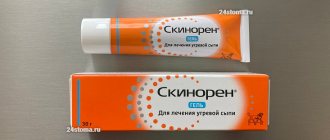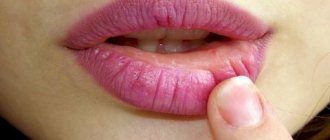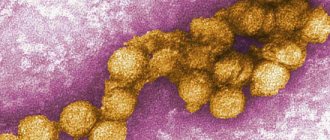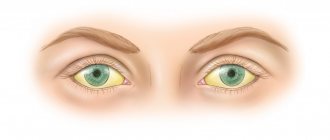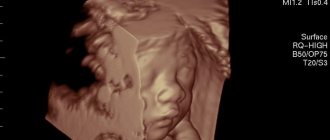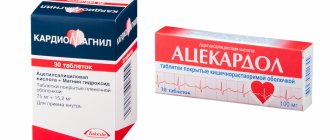Norm
Jaundice occurs due to disruption of bilirubin metabolism, its excretion and accumulation.
Bilirubin tends to form due to cytochromes, red blood cells and myoglobin, which have broken down.
Bilirubin comes in two forms:
- Incoherent. It is toxic, interacts with the protein albumin, and is transported to the liver area through the bloodstream;
- Connected. Cells that are in the liver area combine bilirubin and glucuronic acid, changing it into direct or conjugated bilirubin. Next, the liver produces bile, where bilirubin will be located, and it enters the intestines with it. Next, bilirubin is removed from the feces.
Yellow
See a doctor urgently!
The appearance of a jaundiced tint to the skin is an alarming symptom that may indicate various problems with the liver and gall bladder, parasitic and infectious diseases. In this case, the entire skin acquires a yellowish tint; The mucous membranes of the mouth and the whites of the eyes may also turn yellow.
But the appearance of icteric plaques on the skin - xanthoma - is a symptom of a lipid metabolism disorder. In this case, you need to take tests to determine lipid and cholesterol levels. The xanthomas themselves can be removed - laser removal is preferred. Coloring the skin yellow is also possible when consuming a large amount of foods rich in carotene: carrots, pumpkin, etc. In this case, eliminating them from the diet will lead to a rapid improvement in the condition of the skin. In addition, a pale yellow skin tone is characteristic of smokers.
Or to a cosmetologist?
With age, lipofuscin, an “aging pigment,” begins to be deposited in the skin, which gives it a yellowish tint. In this case, various external and injectable preparations with vitamin C are well suited. And you can whiten age spots using lasers and peelings.
Cancer, jaundice, excess cholesterol. What health problems do the eyes reveal? Read more
Types of jaundice
The following types of jaundice are distinguished according to their nature:
- Physiological. It occurs most often in children if their liver tissue is immature. Usually occurs in a large percentage of newborns on the third or fourth days of life. Usually occurs in premature babies. This is due to the fact that the body has not yet had time to adapt to the habitable environment. Jaundice itself can disappear in seven to twenty-one days, and does not harm the child’s body.
- Hemolytic. It occurs when red blood cells are destroyed. Hemoglobin, when released, turns into bilirubin. This effect may occur due to anemia and changes in the composition of hemoglobin protein. It happens that red blood cells are destroyed due to the influence of poisons and various drugs on them. During pregnancy, this type of jaundice occurs due to conflict between the child and the expectant mother.
- Parenchymal (or hepatic). This type of jaundice occurs due to inflammatory processes in the liver tissue due to hypoxia, autoimmune diseases, toxins and hepatitis viruses, which are divided into A, B, C, D, E, F, G.
- Mechanical. This jaundice occurs due to disturbances in the bile flow from the liver to the duodenum. This jaundice can appear due to: stones in the ducts, inflammatory processes, narrowing of the ducts (the disease is dangerous due to complications), neoplasia of the pancreas and liver, roundworms and helminths in the gastrointestinal tract, due to which the bile ducts can be blocked and anemia develops.
Another classification of jaundice is based on its duration:
- Acute jaundice. Rapid simultaneous onset of symptoms;
- Chronic jaundice. Symptoms appear gradually, the speed of their manifestation is associated with the course of the disease that caused jaundice.
Why does the skin turn yellow after drinking?
With constant intoxication due to regular alcohol consumption, the liver can no longer cope with the load. Due to constant exposure to toxins, cell destruction occurs, the flow of bile is disrupted, and the level of bilirubin rises, which enters the bloodstream and gives the skin a yellow tint. Liver pathologies due to alcohol abuse develop in 3 stages.
Steatosis, or fatty liver disease
About 80% of alcoholics suffer from pathology. In most cases, the disease is asymptomatic. There are periods of exacerbation, during which the following symptoms appear:
- loss of appetite;
- abdominal pain;
- heaviness in the right side, which is pronounced even after minor physical exertion;
- increased fatigue;
- bloating, diarrhea, change in stool color;
- the appearance of a vascular pattern in the form of stars on the face and limbs.
The pathology develops over a long time or rapidly, depending on the duration and amount of alcohol taken. After a long period of heavy drinking, the main manifestation of steatosis is a yellowish tint of the skin and sclera of the eyes. If at least one of the signs of alcoholic liver disease occurs, you should immediately stop taking ethanol and consult a doctor. Cell damage with steatosis is negligible. Timely diagnosis and treatment will help achieve stable remission and prevent complications.
Hepatitis
If left untreated, in 50% of cases, fatty liver disease develops into alcoholic hepatitis. The disease develops 2-5 years after regular ethanol intake and is expressed by the following symptoms:
- weakened state;
- exhaustion;
- yellowness of the skin, sclera;
- aching pain in the abdominal area, radiating to the right hypochondrium;
- upset stool, nausea, vomiting.
If you suspect hepatitis, you should immediately consult a doctor. Without proper treatment, the disease quickly progresses and develops into cirrhosis and carcinoma.
Cirrhosis of the liver
The disease is the final stage of liver pathology. The main signs of the disease include:
- sudden weight loss, lack of appetite;
- large belly due to an enlarged liver;
- ascites, edema, impaired excretory function;
- the appearance of a vascular pattern on the face, hands;
- change in the color and smell of urine, consistency of stool;
- the appearance of bruises even after slight pressure on the skin, especially on the lower extremities;
- poor blood clotting;
- bitter taste in the mouth.
If left untreated for cirrhosis, the patient falls into a coma and then dies. The disease without maintenance therapy leads to the development of carcinoma and liver necrosis. In this case, only organ transplantation can help.
If left untreated, cirrhosis causes bleeding from the veins of the esophagus and leads to death. It is necessary to consult a doctor when the first signs of the disease appear. The doctor will prescribe a diet and drug therapy. If treatment is unsuccessful, an organ transplant will be required. Otherwise, the liver fails and death occurs.
What you need to know
Yellow skin color also occurs due to carotene oversaturation. This happens if a person often eats vegetables and fruits that contain it in large quantities.
How to distinguish such yellowing from jaundice? With it, only the skin is stained, but not the mucous membranes.
It happens that the skin turns yellow due to taking medications containing acryquine or picric acid.
Further, the skin turns yellow. If you consume excessive amounts of spices, spicy foods, fast for a long time, or frequently use alcohol or drugs.
Grey
See a doctor urgently!
Dull, grayish skin is a sign of thickening of the outer (horny) layer of the epidermis. In medicine, this condition is called hyperkeratosis. This problem can be caused by various skin diseases (ichthyosis, keratoderma, etc.) and internal diseases - diseases of the gastrointestinal tract, metabolic disorders in diabetes mellitus. This condition can also develop with hypovitaminosis, especially with a lack of vitamin A.
Or to a cosmetologist?
Exposure to aggressive factors on the skin - strong wind, frost, direct sunlight - can also give the skin a dull hue. In addition, a grayish complexion can be caused by improper skin care and stress. A cosmetologist's solution to this problem is aimed at normalizing home skin care - serums that even out skin texture, scrubs and exfoliating masks, as well as surface peelings, including enzyme peeling, hydropeeling, and carbon peeling will be used.
Winter is not suitable. How to cope with seasonal appearance problems Read more
Diagnostics
To identify jaundice and determine what kind of disease a person has, you need to carry out the following diagnostics:
- CBC, where hemoglobin is determined;
- Blood biochemistry, which shows total bilirubin and its secretions;
- Lipid profile study;
- Test for thyroid hormones;
- Testing for tumor markers;
- Test for roundworms;
- TAM, which determines the level of bilirubin and its secretions;
- Immunological analysis to detect antibodies to viral hepatitis;
- PCR research;
- Antiglobulin test (for newborns);
- Fibrogastroduodenoscopy, which shows inflammation, neoplasia and bile duct stones.
Dyspnea
Diagnostic procedures for each patient are selected individually by the doctor.
Diagnosis and treatment of liver diseases
The method of therapy is selected after a thorough examination and determination of the type of disease. The main diagnostic methods include:
- initial examination. In patients with liver pathologies, muscle atrophy is observed, lymph nodes are enlarged, and the salivary glands are swollen. On palpation of the abdominal cavity, the liver noticeably protrudes from the hypochondrium; there is a painful reaction with slight pressure;
- laboratory diagnostics. According to the test results, the number of leukocytes, bilirubin and transaminases was exceeded. Hemoglobin and red blood cell levels drop, and anemia develops. Laboratory diagnostics allows you to determine the pathology at the initial stage;
- Ultrasound. The examination is the most effective. Using ultrasound, you can determine the extent of pathological changes. At the same time, an examination of the gallbladder and abdominal organs is carried out to exclude concomitant diseases.
If necessary, a biopsy is prescribed. Diagnosis is carried out at advanced stages of the disease to determine the extent of organ damage. The procedure has a number of contraindications and is carried out only on the recommendation of the attending physician.
Based on the results of the examination, the doctor determines the method of treatment. The main methods of treating liver diseases include:
- strict diet. Alcoholic drinks, fatty, smoked, salty, sweet foods, canned food, and flour products are completely removed from the diet. Meals should be frequent and small. Food should be boiled, steamed, stewed. The diet should contain proteins, vitamins, carbohydrates;
- drug treatment. Glucocorticosteroids are prescribed to relieve inflammation. The main medications in the treatment of hepatitis are hepatoprotectors. Preference is given to drugs with essential phospholipids. They accelerate cell regeneration, provide a protective function, and restore normal organ function. Such drugs include Essentiale Forte N, Heptral, Phosphogliv. Medicines are prescribed by a doctor individually after an examination.
Drug therapy is an auxiliary treatment method and only briefly alleviates the patient’s condition. Without complete abstinence from alcohol, liver restoration is impossible. There is no medicine that you can drink and then drink alcohol in any amount without health consequences.
The liver is one of the few internal organs that regenerates on its own. Recovery is possible only with a complete abstinence from drinking alcohol, following a diet, and occurs faster in the early stages of the pathology. If jaundice appears due to drinking alcohol, you should immediately consult a doctor. The doctor will select effective treatment and give recommendations that will help cope with the disease and avoid complications.
Red
See a doctor urgently!
Redness of the face can be either an independent disease - rosacea (it is characterized not only by redness, but also by a rush of blood to the face), or a symptom of various internal problems: arterial hypertension, diseases of the gastrointestinal tract, in particular the liver, infectious diseases. In addition, redness can develop as an allergic reaction. In this case, you must first eliminate the allergen, and then treat the skin with anti-inflammatory drugs, and, according to indications, prescribe hyposensitizing therapy.
Or to a cosmetologist?
If your face turns red periodically, it is necessary to choose care aimed at protecting the skin from aggressive factors. These are usually products for sensitive skin. Also in the arsenal of cosmetologists there are injectable drugs that reduce vascular reactivity - mesobotox; mesotherapy and biorevitalizing preparations that restore and protect the skin.
Sallow complexion and acne. 8 signs that it’s time for you to see a doctor Read more

